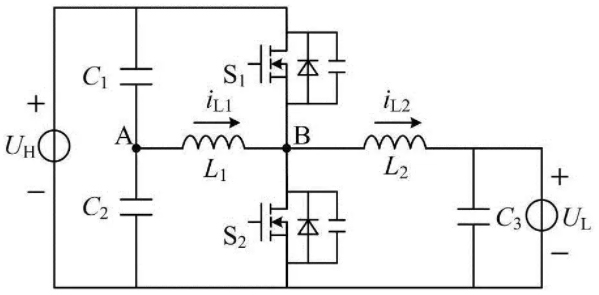What is a bi-directional DC-DC converter?
The bi-directional DC-DC converter is a bi-directional DC-DC converter that changes the direction of current according to specific needs while keeping the polarity of input and output voltages unchanged, realizing the bi-directional DC-DC converter in dual quadrant operation. In fact, to achieve bi-directional energy transfer, it is also possible to connect two unidirectional DC-DC converters in reverse parallel, because the active rate transmission path of unidirectional converters generally require diodes, so the direction of energy flow of a single converter is still unidirectional, and such a connection will make the system large in size and weight, low efficiency, and high cost. Therefore, the most important way is to realize the bidirectional flow of energy through one converter.

Application Prospects of Bi-directional DC-DC Converters.
In recent years, the research of electric vehicles has been developed rapidly considering aspects such as environmental pollution and energy security. Electric vehicles include three major categories: pure electric vehicles, hybrid vehicles and fuel cell electric vehicles, and bidirectional DC-DC converters are an important technology applied to electric vehicles. At present, battery electric vehicle technology has had a more mature development, but due to the poor reliability of the battery and small energy storage, electric and internal combustion engine drive combination of hybrid vehicle research has become the focus of development of some enterprises and research institutes in China.
The hybrid electric vehicle consists of three parts: brushless DC generator, inverter, AC motor for driving, battery and bi-directional DC-DC converter. The working process is: start the generator, the battery supplies power to the brushless DC motor through the bi-directional DC-DC converter, and the brushless DC motor drives the generator to make it start and run as an electric motor. After the engine works normally, the rotating engine sends out DC electricity, and the electrical energy of the generator charges the battery on the one hand, and supplies power to the inverter on the other hand to make the AC motor work and drive the vehicle. When the electric vehicle accelerates, the generator and the battery supply power to the inverter at the same time, and the output power of the AC motor increases. When the vehicle is going downhill or braking, the motor turns to regenerative braking state, and the inverter returns the motor energy to the battery through the bi-directional DC-DC converter.
How to control bi-directional DC-DC converter?
DC/DC converter converts a fixed DC voltage into a variable DC voltage. This technology is widely used in stepless speed change and control of trolley buses, subways, trains and electric vehicles, while making the above control have the performance of smooth acceleration and fast response, and at the same time receiving the effect of power saving. Using DC-DC converter instead of variable resistor can save 20% to 30% of the electrical energy. DC chopper can not only play the role of voltage regulation (switching power supply), but also can play an effective role in suppressing the harmonic current noise on the grid side.